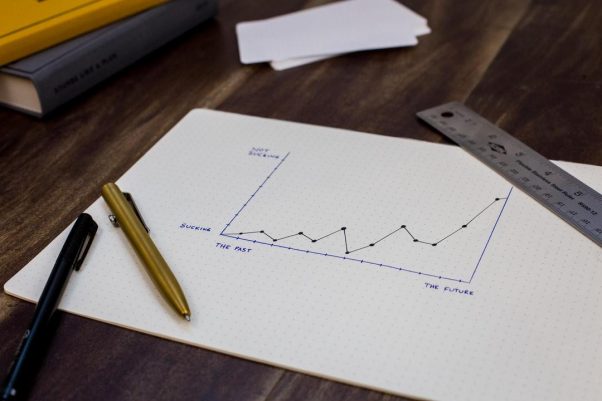Charts are often used to display information and help businesses make sense of their collected data. It’s a great way to compare services or see how well a product performs over time. Charts can help explore complex relationships between numbers or rank items and processes. It’s a means of organizing data to understand its relationship better and get a visual representation of the structure of a business. There are several different types of charts that you can use for various purposes. You’ll learn more about spline charts and how they’re used in real-life applications on this page. Keep reading to find out more.
What is a spline chart?
A spline chart is a line chart, except it utilizes smooth curves instead of straight lines. It’s a great way to show data over a specific period of time. The spline chart is named after the spline used in shipbuilding. It’s a curved strip used to repair planks. This chart type emphasizes patterns and trends because data points are connected gradually. Every data point is associated with a fitted curve, which serves as a more straightforward way to provide a visual representation of time-dependent variables.
How are spline charts used?
Spline charts have smooth, natural curves, perfect for plotting data that shows gradual changes, such as life cycle charts or impulse-response charts—adding multiple lines when you graph allows viewers to see differences between different variables. So, it’s perfect for finding trends or comparing any of these patterns.
It’s easier to see patterns between different retail stores, for example, or identify seasonal variations because each variable will have its spline. It’s also best used for plotting changes that happen over time. For example, the X-axis can have the time while the variable will be on the Y-axis to show the value changing. Spline charts are seen as more accurate graphs because changes are visually represented in a fluid pattern. Businesses can use it in retail, manufacturing, social science, and many other industries.
Read Also: Faux Plant Craze Returns in 2022
Are there different types of spline charts?
Different types of splines can be utilized depending on the information that needs to be plotted. For example, a spline area chart map out an area. It uses a solid color if there’s one variable. If there are multiple variables, then it’s translucent. A range spline area chart shows two related variables and highlights the space between them. It also shows the top and bottom of the range. A multiple spline graph has a number of variables, while a stacked spline includes variables’ fluctuations to show qualitative data changes. The variables tend to mirror the pattern because they’re related.
What are the pros and cons of using spline charts?

Splines have a more attractive appearance because of their fluidity. They show that changes are gradual, which is a reflection of real life. Variables don’t often change instantly, and the smooth curves show that. It can be cluttered if there are too many variables, and it’s best to have four variables or fewer. Some alternatives for this chart include the classic line chart, which has straight lines and isn’t as flexible. An area chart is also a great alternative with multiple variations. The lines are straight rather than fitted curves.
When using this type of chart, it’s essential to use a strategy that does not misrepresent data. These charts are incredibly narrow, and they are not suitable for all data types. Most of the time, line charts work better to avoid confusion. If you’re planning to use splines for your business, make sure that the scale is regular and even and that everything is labeled clearly.

